Pilgrimage (Hajj) is the fifth pillar of Islam. Other religions of the world have no concept of collective worship. It is Islam’s distinctive feature that it enjoins its followers to worship collectively. The ritual prayer enables the faithful to come together five times a day. In the holy month of Ramadan, Muslims all over the world fast by abstaining from food and drink during daylight hours. Similarly in the month of Dhu al-Hijja, Muslims worldwide, those who can afford it, assemble together in the holy city of Mecca donned in the same attire to perform the Pilgrimage rites. Where one of the aims of Pilgrimage is to purify one’s lower self and ego, it also aims to create an environment of unity and harmony. Muslims from almost all walks of life gather together at a central location creating awareness of each other’s issues and benefitting from each other’s experiences. It is Pilgrimage in fact, which teaches Muslims about their oneness and origins.
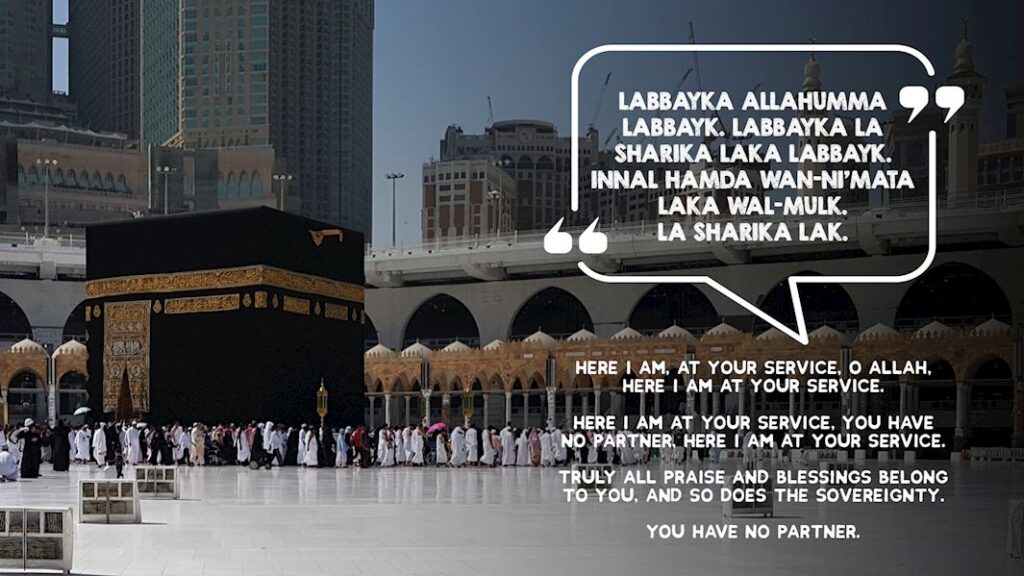
Based on the books and lectures of Shaykh-ul- Islam Dr. Tahir ul Qadri, the ‘Teachings of Islam’ series is structured in a question-and-answer format. This is the seventh book in the series, comprising the rulings of Pilgrimage and Visitation (Hajj and Umrah). There are 225 questions in total, answered in a simplified and ‘back-to-basics’ manner. They have been divided into nine chapters to facilitate access. Some questions and answers are being presented here:
Q. What is yawm al-tarwiya?
A: The day in which the rites of Pilgrimage begin is known as yawm al-tarwiya. This is the 8th of Dhu al-Hijja.
Q. What is yawm Arafa?
A: It is the day in which the Pilgrimage takes place at the grounds of Arafat. It takes place on the 9th of Dhu al- Hijja.
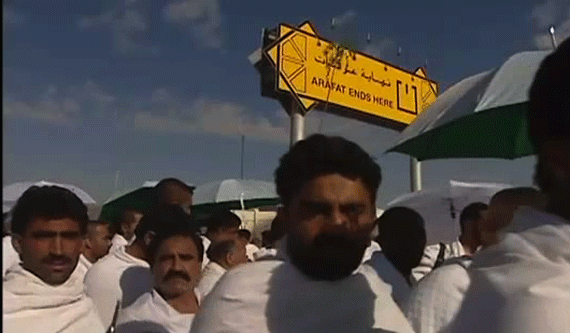
Q. What is wuquf Arafa?
A: Wuquf Arafa refers to the time spent at Arafat on the 9th of Dhu al-Hijja. During this time, the pilgrims carry out the following practices whilst being in a state of humility and with purity of intentions: dhikr, talbiyya, dua, istighfar and salam. The Zuhr and Asr ritual prayers should be offered and supplications should be made to Allah until sunset.
Q. What is yawm al-nahr?
A: This is the day in which the animals are sacrificed. It is the 10th of Dhu al-Hijja.
Q. What is rami?
A: Casting stones at the three jamarat (stone pillars representing the Satan) is known as ramÏ. The first stone pillar is known as jamara al-ukhra or jamara al-aqaba.The second pillar is known as jamara al-wusta. And the third pillar is known as jamara al-ula.
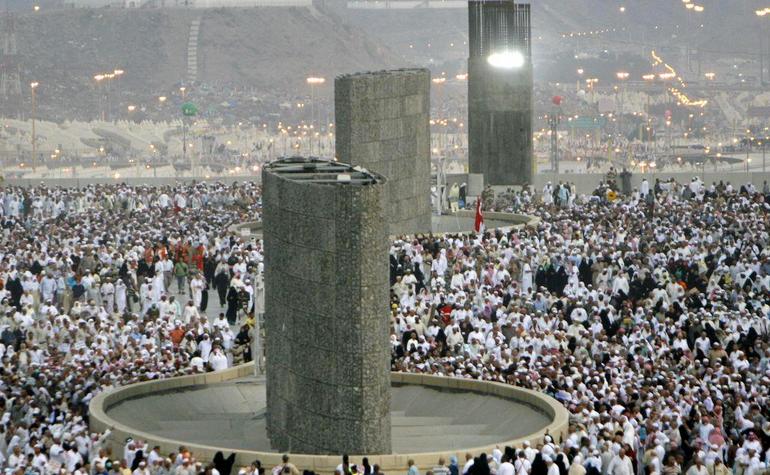
Q. Which jamara is pelted on which day?
A: There are four days in which the ritual casting of stones (rami) is performed:
1. Day One (10th of Dhu al-Hijja): Only the jamara al- aqaba must be pelted.
2. Day Two (11th of Dhu al-Hijja): All three jamarat must be stoned in the following order: jamara al- ula, jamara al-wusta, and then jamara al-aqaba.
3. Day Three (12th of Dhu al-Hijja): Again all three jamarat must be pelted in the same order.
4. Day Four (13th of Dhu al-Hijja): All three jamarat must be pelted in the same order on the condition that one is staying in Mina that day.
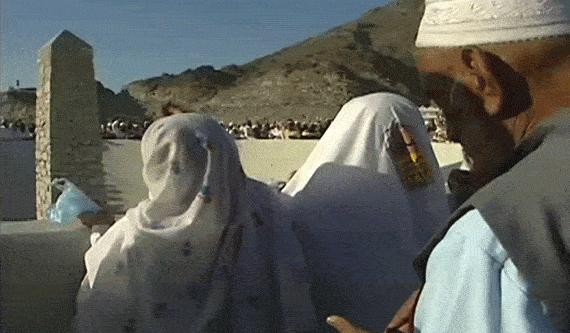
Q.What is ramal?
A: Ramal is to walk hastily in the first three circuits of the Tawaf taking short steps, keeping one’s chest out whilst moving the shoulders simultaneously.
Q.What is istilam?
A: Istilam is to kiss the Black Stone by placing hands on either side of it. If this is not possible due to the large number of people present there, one should raise their hands (or a stick) and face it to the Black Stone as if one is placing their hands on it and then kiss their hands afterwards.
Q.What is sai?
A: SaÏ is to go to and fro between Safa and Marwa. It consists of seven circuits. There are two green markers (mÏlayn akh\arayn) where the pilgrim has to run.
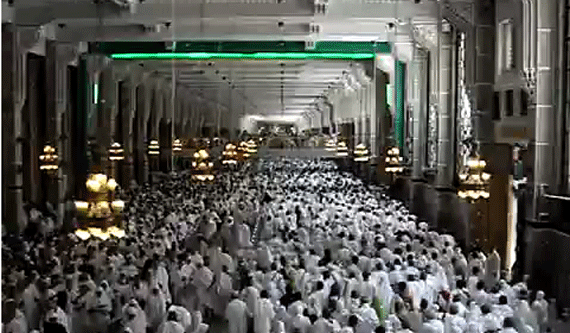
Q.What is hadi?
A: The animal that is sacrificed on the occasion of the Pilgrimage and Visitation is known as hadÏ.
Q. What is halaq?
A: After performing the ramÏ and sacrificing the animal, the male pilgrim is to shave his head whilst facing the direction of the qibla. This is known as halaq and it is the preferred method of removing the hair.
Q. What is taqsir?
A: After performing the ramÏ and sacrificing the animal, rather than shaving the head it is also permissible to trim one’s hair. This is known as taqsÏr. Shaving the head is superior to trimming the hair. Female pilgrims do not perform the Halaq or taqsir; instead they cut a portion of their hair equal to the length of a fingertip.
Q. What are the obligatory(Fard) components of the Pilgrimage?
A: The obligatory (fard) components of the Pilgrimage are:
1. Wearing the ihram: this is a condition (shart) of the Pilgrimage.
2. Wuquf Arafa (to stay in Arafat at any time after the sun is at its zenith on the 9th of Dhu al-Hijja till the break of dawn on the 10th of Dhu al-Hijja).
3. Four circuits (as minimum) of the Tawaf al-ziyara.The wuquf Arafa and the Tawaf al-ziyara are both the integrals (rukn) of the Pilgrimage.
4. To make the intention (niyya).
5. Performing everything in the correct order, i.e., putting on the ihram first, then performing the wuquf Arafa, and then the Tawaf al-ziyara. Every obligatory component must be performed in its correct time.
6. The wuquf Arafa must be performed in the correct place, i.e., in Arafat. It must be noted that Batn Arafat is outside the boundaries of Arafat.
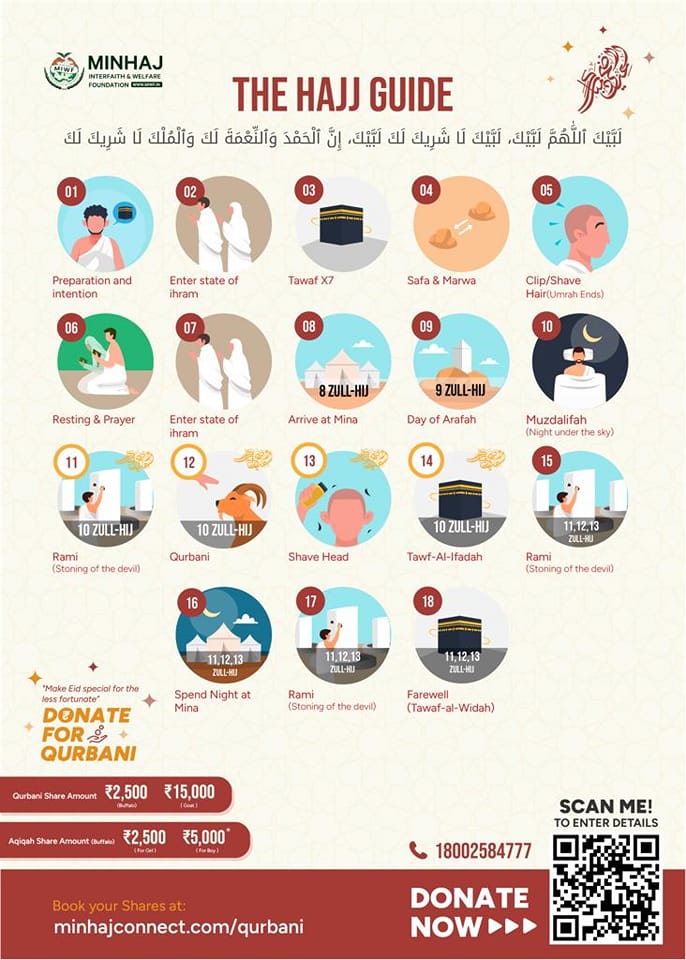
Q. What are the imperative(Wajib) components of the Pilgrimage?
A: The imperative (wajib) components of the Pilgrimage are:
1. Wearing the ihram at the mÏqat. It is impermissible to pass the mÏq¥t whilst not being in a state of ihram. It is permissible to wear the ihram before arriving at the mÏqat.
2. Starting at Safa, running briskly between Safa and Marwa is known as saÏ.
3. Doing the saÏ by foot, unless there is a valid reason.
4. If one reaches Arafat during the day time, one should stay there until the sun has set, even if one reaches there whilst the sun is setting or has set. Therefore,
performing the wuquf Arafa until sunset is imperative (wajib). If one reaches there after sunset, then there is no particular length of time the pilgrim has to stay there—the wajib however still remains unfulfilled.
5. One should not leave Arafat before the imam. If the imam is delayed, one should wait there until he has left. If the imam is late from his scheduled departure, then it is permissible to leave before him. If on account of overcrowding or any other reason, one stays back in Arafat after the imam has left, there is no harm in that.
6. Staying at Muzdalifa (a ground between Arafat and Mina).
7. Combining both the maghrib and isha prayers at the time of isha upon arrival at Muzdalifa.
8. Performing the ramÏ (stoning of the jamarat) before shaving the head.
9. Shaving the head or trimming the hair whilst inside Mina or within the boundaries of the Haram.
10. Those performing the Hajj Tamattu and Hajj Qiran must perform the animal sacrifice (qurbani).
11. The animal sacrifice (qurbanÏ) must be performed within the specified time and place (i.e., during the days of nahr and inside the haram). The head should be shaved after the qurbanÏ and not before.
12. Performing most of the Tawaf al-ziyara within the days of nahr. The circumambulation performed after returning from Arafat is called Tawaf al-ziyara. It is also known as Tawaf al-ifada or Tawaf al-fard.
13. Performing the circumambulation around the HatÏm (a part of the Kaba which is outside of the northern wall).
14. Performing the circumambulation anti-clockwise.
15. The circumambulation should be performed on foot, unless one has a valid excuse. Otherwise, it can be performed in a wheelchair.
16. The circumambulation must be performed in a state of ritual ablution (wudu). If the circumambulation is performed whilst in a state of ritual impurity or without ablution, then it must be repeated.
17. Covering one’s nakedness (awra) during the circumambulation.
18. Praying two cycles of tahiya al-Tawaf at the Maqam IbrahÏm.
19. The ramÏ (ritual casting of stones), qurbani (animal sacrifice) and the shaving of the head should be performed in this order. The Tawaf al-ziyara should be performed afterwards.
20. Those who are from outside the boundaries of the mÏqat, they must perform the Tawaf al-sadr before leaving to go home. This is also known as the Tawaf al-wida.
21. All of the restrictions of ihram are lifted once one gets their head shaved. However, sexual relations with one’s spouse remains restricted until one has performed the Tawaf al-ziyara.
22. Adhering to the prohibitions of ihram, i.e., not wearing stitched clothing (for men); not covering the face and head (for men); not covering the face (for women), however it is compulsory for women to have their heads covered; not fighting or arguing; not uprooting plants; not killing animals, or even pointing to an animal for a hunter to kill.


